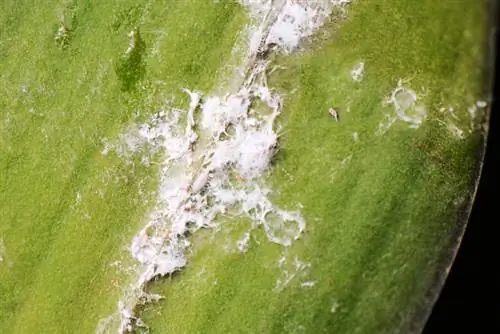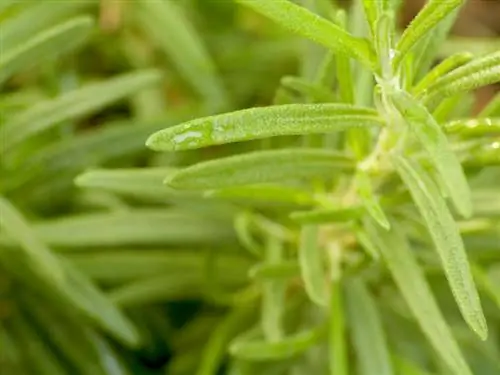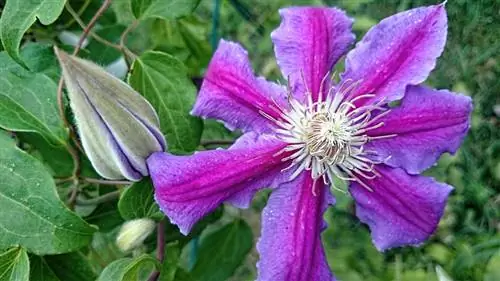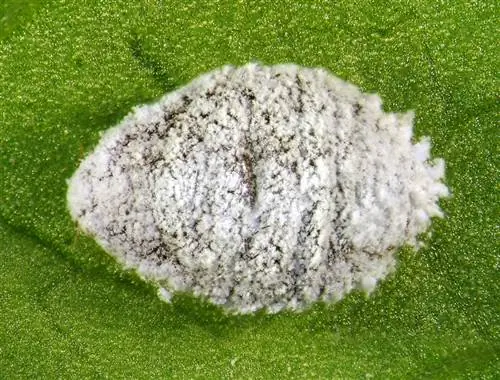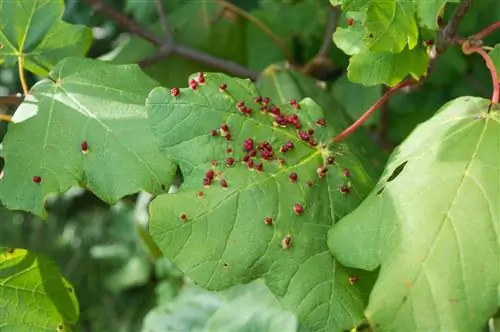- Author admin [email protected].
- Public 2023-12-16 16:46.
- Last modified 2025-06-01 06:02.
They are tiny, capable of producing virgins and sucking the sap from the leaf veins of orchids. Lice do not show reverence for the queen of flowers, but spread explosively on leaves and shoots. Our tips for successful combat explain how you can put a stop to the plague. This is how it works without chemical agents.
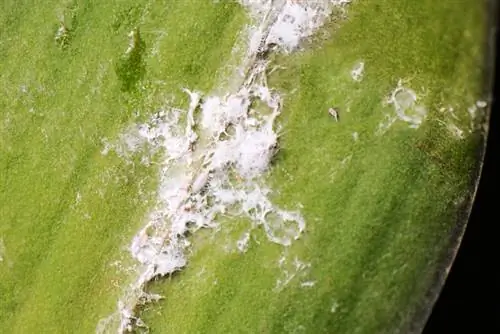
How to get rid of lice on orchids?
To combat orchid lice, quarantine the plant and spray it with a jet of water. Use alcohol-soaked cloths to wipe the leaves and alcohol-soaked cotton swabs for individual lice. A soft soap and alcohol solution can also help to permanently remove lice.
These symptoms signal a lice infestation
Lice appear in many different forms. Mealybugs and mealybugs are 3-5 mm small, white, light brown or pink in color and have greasy, woolly hair. In contrast, scale insects are just as tiny and are located under an armor-like shield, which makes them extremely difficult to combat. Yellowish-green to dark aphids are 2-7 mm small and more mobile than other aphids. We have summarized the most common symptoms of an infestation for you here:
- White webs and small cotton balls indicate mealybugs and mealybugs
- Tiny bumps on the leaves indicate the presence of scale insects
- Aphids first colonize the undersides of the leaves in droves
As the lice deprive the orchids of their lifeblood, they are extremely weakened. In the advanced stage, the leaves deform and die. Shoots and pseudobulbs become crippled and fungal infections spread.
Fighting lice with natural remedies - This is how it works
Once you have located the pests, please quarantine the affected orchid immediately. In the early stages of the infestation, there are good prospects of combating the plague with natural means instead of resorting to chemical insecticides. These methods have proven themselves well in practice:
- Pack the roots in a plastic bag so that you can spray the plant upside down with as strong a jet of water as possible
- Then wipe the leaves with a cloth soaked in alcohol
- Dab individual mealybugs, mealybugs and scale insects repeatedly with a cotton swab dipped in alcohol
On orchid species with strong leaves, the classic soft soap solution permanently removes all remaining lice. For this purpose, dissolve 15 grams of soft soap in 1 liter of water and add 1 tablespoon of spirit. Spray the tops and bottoms of the leaves with this mixture every 2 days until lice no longer appear.
Insecticides containing neem help with high infestation pressure
If natural remedies do not achieve the desired success, specialist retailers have effective insecticides with natural ingredients available for you. On thick-leaved orchids, such as Phalaenopsis or Dendrobium, destroy the lice with acaricide sprays. If in doubt, test the insecticide on a single leaf in advance.
Tip
A properly cared for orchid develops its own defenses against pests and diseases. The central criteria in care include a bright, not full sun location with pleasant room temperatures. Spray leaves and aerial roots daily with filtered rainwater. From spring to autumn, add a liquid special fertilizer for orchids to the irrigation water.

